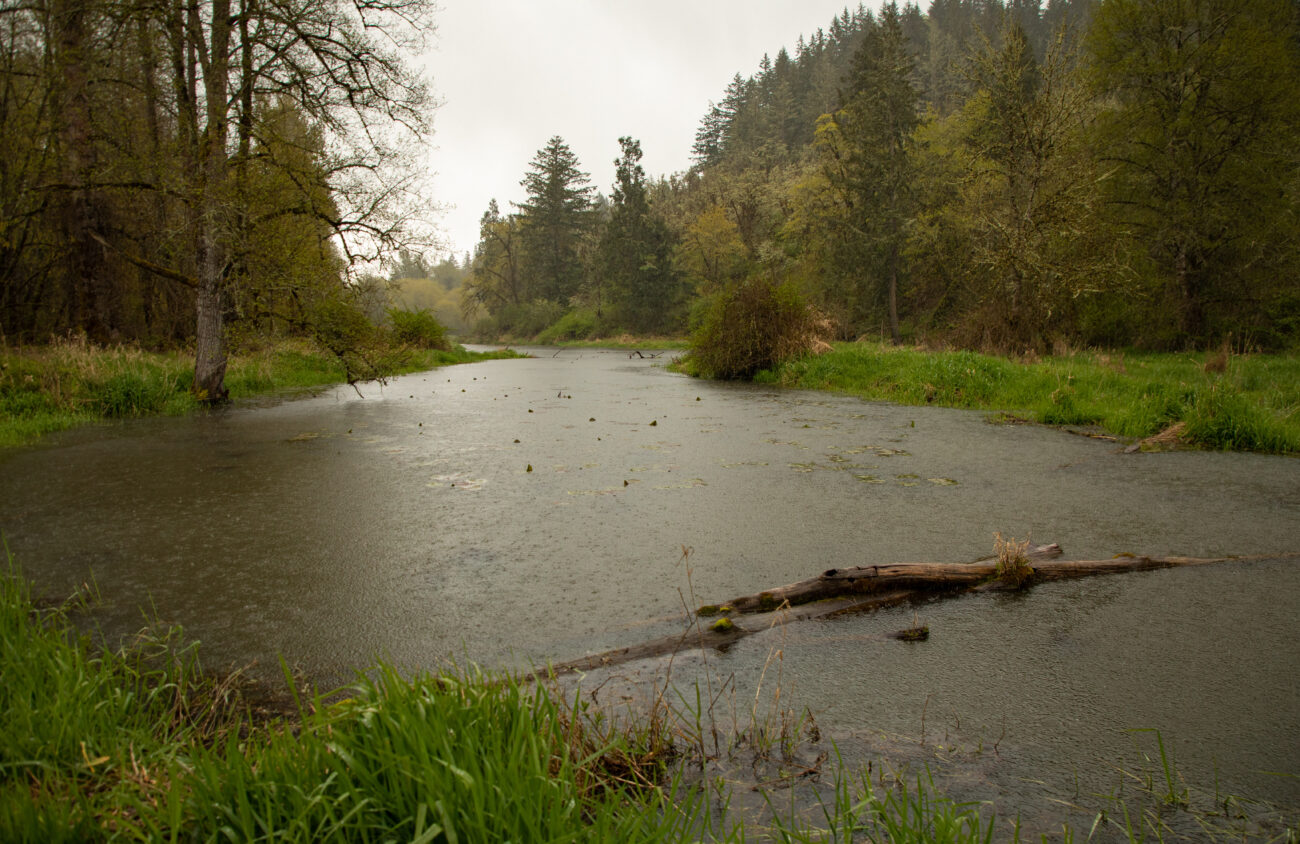All it takes is one disaster for Eugene to lose its primary source of water. Just one fire, one earthquake or one oil spill on the McKenzie River could affect Eugene Water and Electric Board’s 23 million gallons per day of drinking water, resulting in panic and emergency actions such as treating water at home, relying on bottled water, reservoirs and more.
Eugene is the only major city in the Pacific Northwest to have a sole water source.
Karen Kelley, chief operations manager for EWEB, says if something major, like an earthquake, impacts the McKenzie River, “We have built five emergency water stations. And we’re working on two more, where people could hopefully at least go to these emergency sites and fill up jugs” to take water home.
The single water treatment plant would likely not survive an earthquake because it does not meet the seismic standards to ensure the structure could resist such forces, Kelley explains.
With an investment of $100 million, EWEB plans to build a water treatment plant with a capacity of 19 million gallons a day on the Willamette River, upstream of Eugene and Springfield. “This is an expensive project. We know that,” Kelley says. “We’re looking at every possibility of getting legislative funding and other grants on board to help reduce that burden on our ratepayers.”
As of right now, EWEB plans to start the design work in 2024 and it anticipates starting construction in 2026, Aaron Orlowski, EWEB spokesperson, writes in an email.
“I think we all need to be cognizant of having backup resources like water, especially in an area of the size that is served by that utility,” says Travis Williams, riverkeeper and executive director for Willamette Riverkeeper. “I do wonder a little bit, though, how far $100-plus million would go in thinking about water conservation? When you look at growing potential water scarcity, even in big rivers like the Willamette, we have less flow in these rivers and less flow into the reservoir” due to climate change.
“Our industry is constantly pushing for us to look for redundancy and resiliency through every part of the system,” Kelley says. “So that’s what we’re looking at with the second source.”
For years, EWEB has gone back and forth about whether or not to add a second water source location for Eugene on the Willamette River because of concerns including water quality.
“EWEB has been mulling over an emergency drinking water intake on the Willamette for several years now,” Michelle Emmons, upper watershed program manager for the Willamette Riverkeeper, writes in an email. “If the intake comes to fruition, one possible positive outcome is that the Willamette’s urban riverfront in Eugene-Springfield may become a higher priority for public investment in habitat restoration and clean water enforcement.”
On the morning of April 20, a semi-truck crashed near the McKenzie River. EWEB reported that the fuel and oil appeared to be contained in the immediate crash area. Furthermore, no oil sheen had reached the river, according to David Donahue, EWEB environmental specialist.
The incident was a hint at how one major incident could spin Eugene residents into emergency measures.
As of now, EWEB is working through land use and permitting processes with the city of Springfield because the plant will be located in the unincorporated community of Glenwood, which Springfield has jurisdiction over. Also in the works for the utility company is to receive intake facility permits. Additional hurdles include supplementary permits and approval from the Oregon Health Authority and the Oregon Department of Environmental Quality. “And the list goes on,” Kelley says.
“It’s going to be a long road, but we’re in the midst of it now,” she says.
Learn more about EWEB’s plan at Eweb.org/projects/willamette-water-treatment-plant
